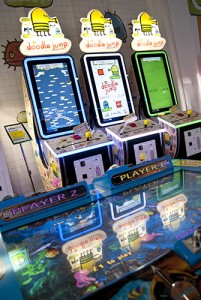Licensed amusement games and prizes have become a staple of the industry, but how effective are they and what makes a blockbuster brand?


FOR decades, the pay-to-play amusement sector has pioneered the use of licensed brands, whether it’s the themed machines themselves or the prizes available to players. The advantages of licensed brands compared with generic games and prizes, must be weighed up against their cost of development. A truly special licensed product can be the making of a manufacturer, suddenly raising its profile to previously unknown heights. To repeatedly strike gold is a skill that a number of today’s amusement companies now stake their reputation.
“As in all branding,” said Steve Tan of UNIS, “it needs to be a simple, loud message, which is easy to recognise. In terms of amusement products the brand needs to, within seconds, sell the game, get the imagination going and make you want to play.”
Although UNIS has licensed products that are geared towards its local market in China, the company has represented some major products by working with development companies such as Raw Thrills on its licensed titles, such as the Fast and Furious series, and Global VR with its Need for Speed line.
“We understand the appeal of a licensed product versus a non-licensed product when it comes to buyers and players alike,” added Tan.
One company synonymous with a particularly strong licensed character is Namco, which continues to bring Pac-Man to new audiences by utilising the iconic brand on both amusement machines and themed plush.
Read the full article in the June issue of InterGame.

